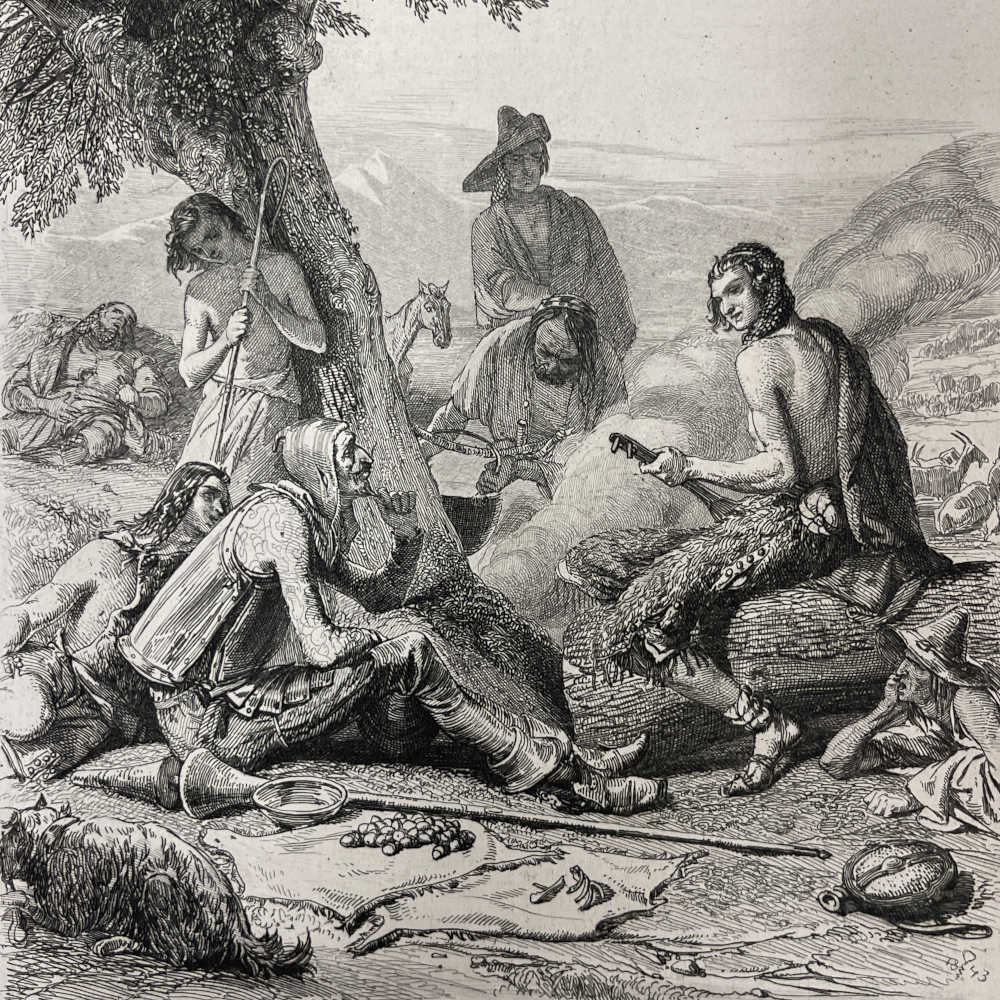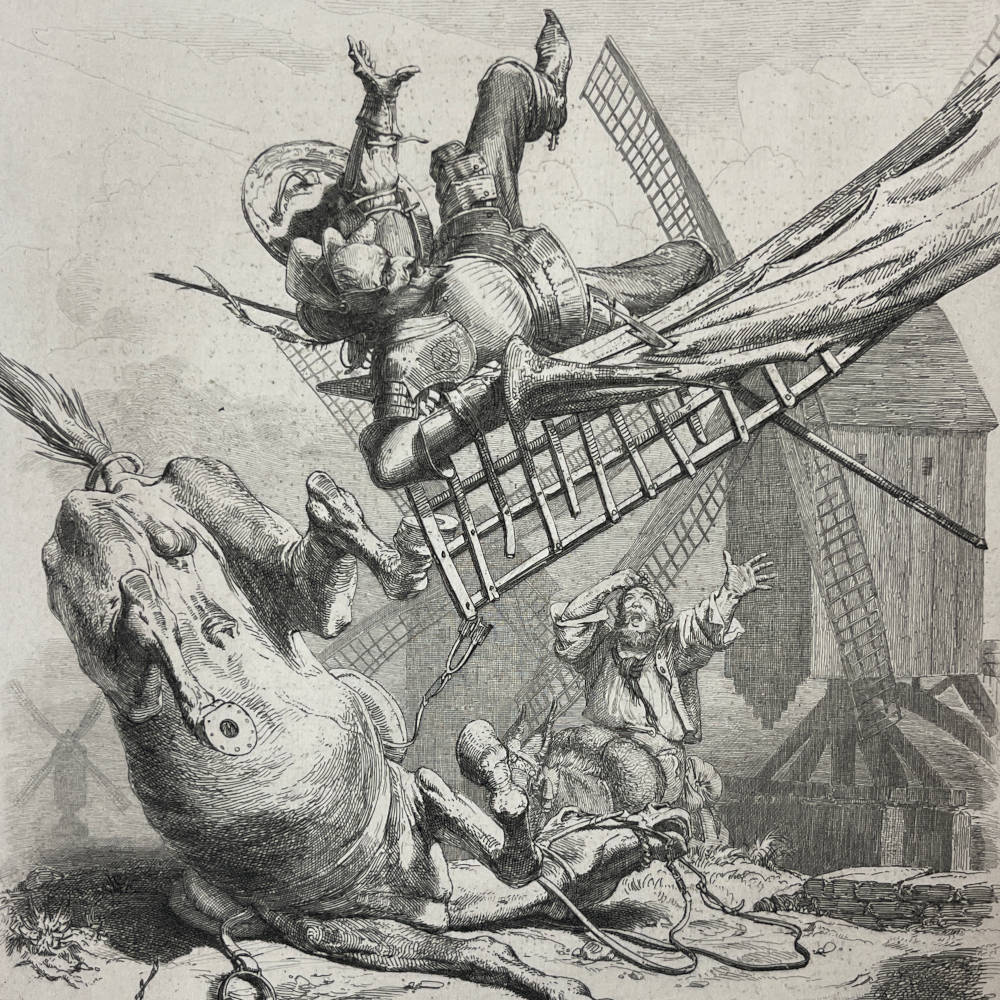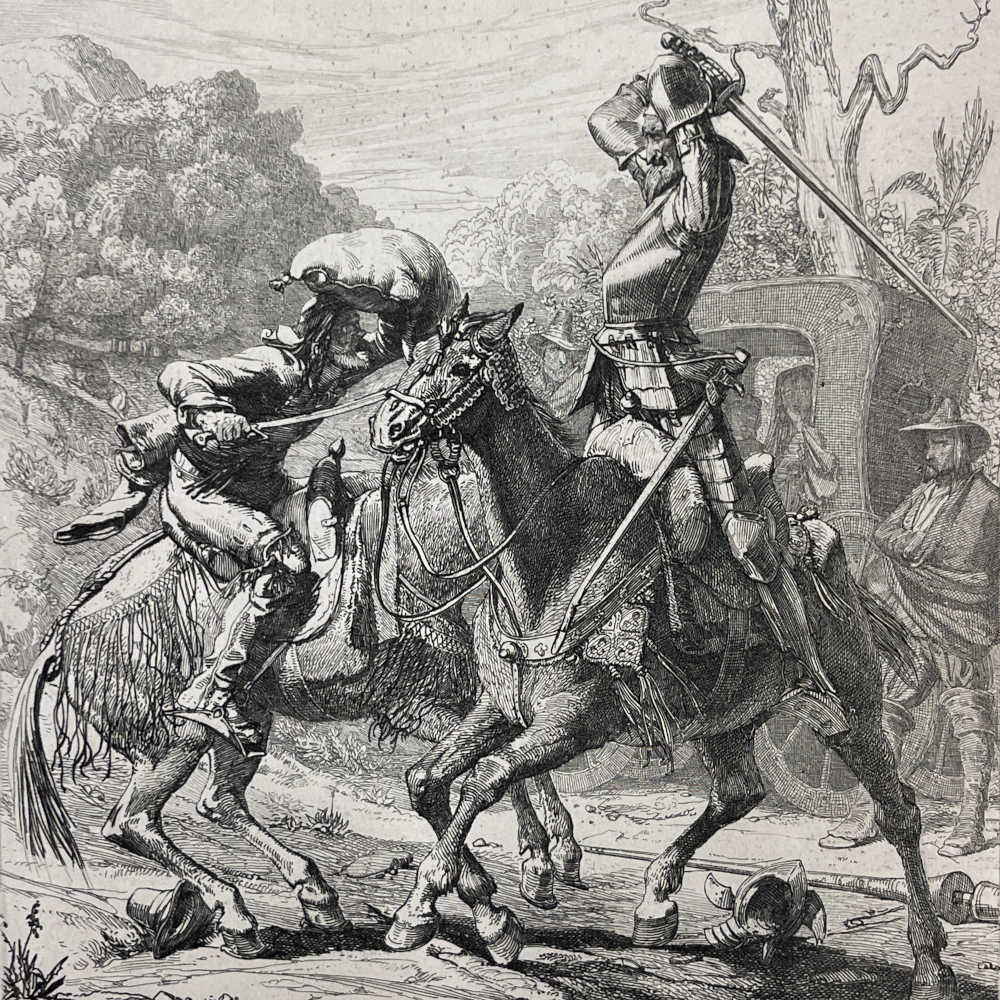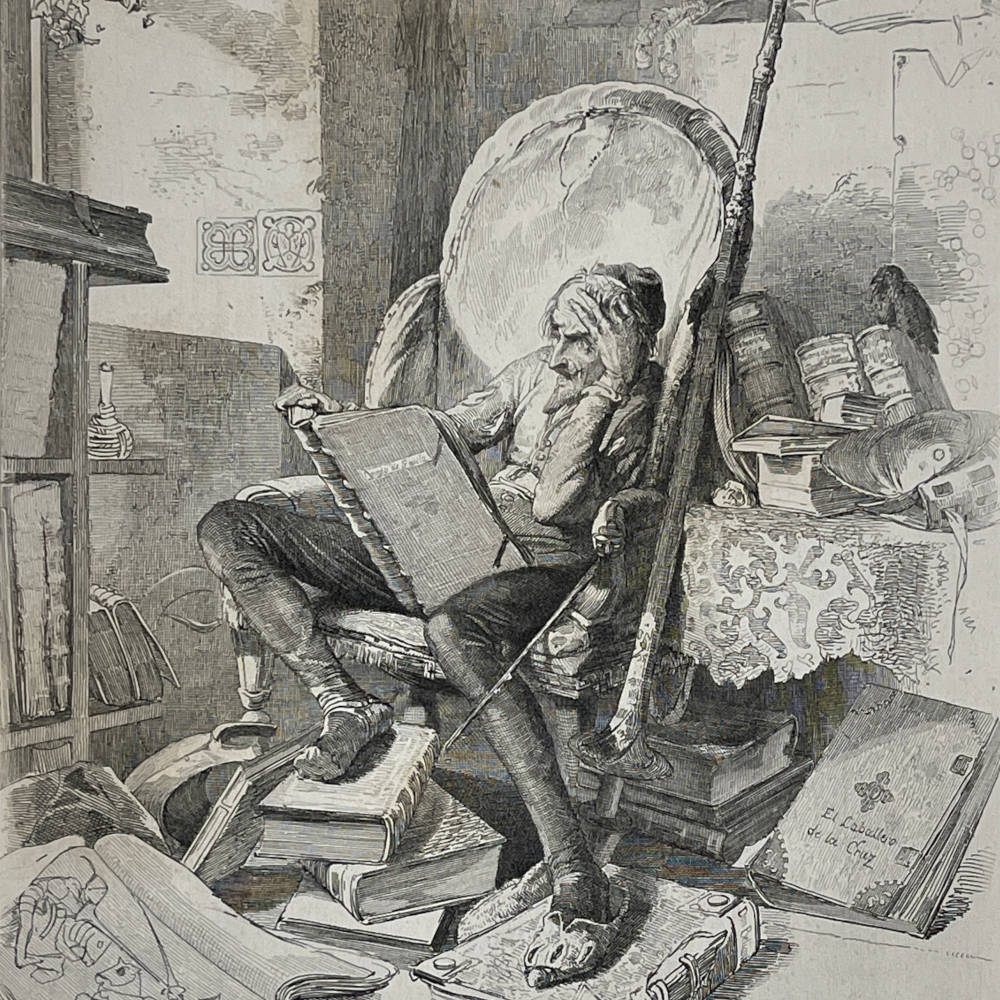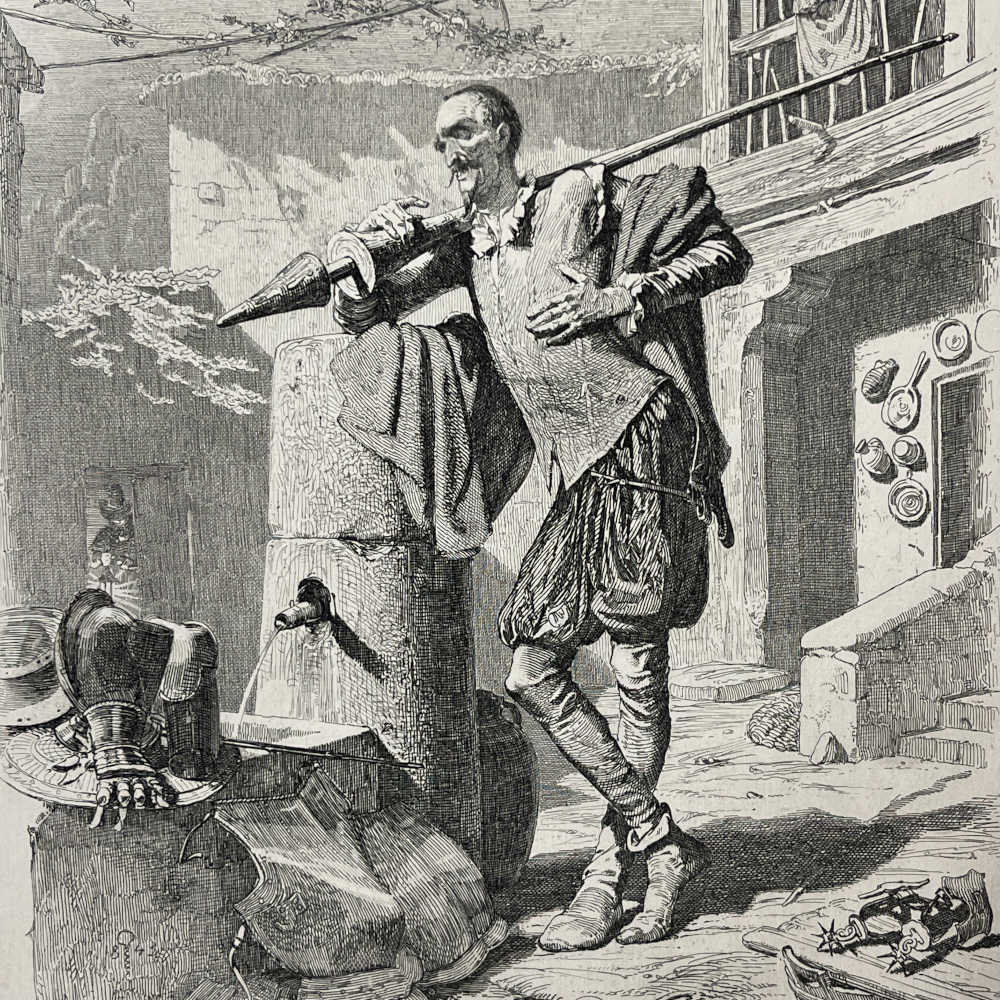Following in his father’s footsteps, Adolf Schrödter studied copper engraving in Berlin. By the time he reached adulthood he had decided to be a painter and studied at the Berlin Academy—but he continued to work as an engraver throughout his career. His works encompassed several types and styles: painting, illustrating, engraving, etching, woodcutting, and lithography, as well as creating ornaments.
Schrödter was particularly well-known for his satirical work. He began making regular contributions to the satirical magazine Düsseldorfer Monathefte in 1847 and the following year he became one of the first members of the progressive artists’ association Malkasten (Paintbox). He was a Professor of Ornamentation at the Großherzoglich Badische Kunstschule Karlsruhe.
Schrödter wrote and drew cartoons for satires and drew technical drawings. He was made a member of the academy in Berlin in 1835 and was awarded a gold medal in 1859.
Schrödter’s work is very well represented in museums in Germany and abroad. For example, the Stedelijk in Amsterdam holds his work Don Quixote in his Study, the National Gallery of Art in Washington holds several of his work and the National Gallery in Berlin has a great many of his works, and his work How Till Eulenspiegel Tricked the Wine Water for a Jug of Wine is held by the Kaliningrad Museum.
